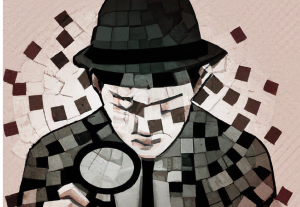When you read about UX research you find lots of emphasis on the planning and structure of the research sessions. Where will you do research at a person’s home or in a research facility? Will you go through a recruiting agency or recruit from your own network? Are you looking for target users? Can remote methods play a part?
These questions are all important in developing a solid research plan, but they don’t speak much to the actual experience of asking people questions and listening to what they tell you.
You might not hear many people admit that user research can sometimes be boring. Especially when you’re doing something like classic usability research, where you have a tightly defined protocol that you’re going through multiple times, it can be hard to stay really focused and engaged. Spending a day with eight or 10 or 20 different participants going through the same material over and over—it’s not easy. It can be pretty draining.
Years of doing UX research have taught me that the most important part of being a great and happy researcher is learning how to fully pay attention and stay engaged with each research participant. Otherwise, that day of eight hour-long usability sessions is too hard to be enjoyable.
Attention is a learned skill. It’s not an inherent character attribute; it’s as learnable as typing or playing the piano. And learning this skill pays off. Learning how to pay attention makes research easier and helps you handle the long days. And it yields richer insights. When you’re fully present you learn so much more.
Limit Distraction
First, consider the barriers to paying attention, starting with yourself. Do you start thinking about lunch at 11:15, making it harder to focus on what you’re doing? If so, keep some protein bars on hand for quick snacking between sessions. Are you worried about dealing with an important email coming in? Schedule time blocks between sessions when you can deal with other work issues.
Keep in mind that it will be harder for you to stay engaged if your participants are losing their own focus. One easy-to-address barrier to participant attention can be resolved by paying them their compensation at the beginning of the session. This helps keep them from worrying if they’ll actually get paid or that they won’t get paid if they don’t say the “”right” thing. Also, be considerate of their comfort. For instance, tell them that it’s okay if they want to pause the session to use the restroom. A comfortable and happy participant will be a better research partner.
The research environment itself can be distracting. As the researcher, it’s up to you to make sure that the environment doesn’t create distraction unnecessarily. If you are doing a research session in someone’s home and the TV is on, it’s okay to politely ask them to turn it off. My colleague Nicole Kahn says, “”I always set the room up for success when I start an interview—TV off, radio off, seated comfortably, preparing people for the pictures I will take.” If you are in an office or conference room, put a sign on the door asking colleagues to not disturb you.
Thoughtfully Record
How you record the session depends on the client, project goals, and research space, as well as what works best for you. Some people find that they lose the flow of the session if they are taking detailed notes. My colleague Sina Mossayeb told me, “If it is just me doing the research, sometimes I’ll write down the quotes or anchor words but in a way that I don’t ever lose flow.” Others find that the act of taking notes helps them stay engaged. Nicole uses this approach. “I always take notes. It helps me star what I need to go back to, keeps me on track, and allows me to record questions.” Experiment with your note-taking style and adjust it as needed so you can focus.
In either case, you have many technology options to back you up. Audio or video recordings make it easy to access verbatim quotes during the synthesis phase so you can pay better attention and not worry about capturing everything during the research session. If you have the budget and time, paying for a transcript from session recordings can make your life easier. If your research involves looking at a computer screen, Silverback is a great recording tool that captures the screen, mouse movements and clicks, and the participant’s face and voice. If you are working in a focus group facility, they will likely have an arrangement with a company such as FocusVision, which can supply video recording and transcript services. Livescribe pens are a popular option for digitally recording notes.
Though recordings can be useful tools, the recording process can also be a major source of distraction. If you are doing video recording of the session, especially if you are moving the equipment around between homes or offices, it’s vital to have someone there to help you out. If you are futzing with changing out tapes or running extension cables with the participant in the room, you will distract both yourself and the participant. Let someone else handle this so you and the participant can stay focused on more important things.
Think about where you put the video camera tripod. It should be tucked somewhere it won’t be tripped over. You should also note where the camera is being aimed; if you are camera shy, being directly recorded can keep you from finding your flow and engagement during a session. Instead, focus the camera on the participant only.
Cultivate Engagement
Once the logistics are taken care of, you can get into the heart of the research experience.
Many researchers find that beginning the session with a conversation helps the participant and researcher relax and focus. Sina has a thoughtful approach to this: “In the course of the interview I spend roughly 15-20% of the time on subject matter or topics that don’t have anything to do directly with my interview objectives. This allows us to deviate and connect on another level—whether emotionally or intellectually—and then dive deeper into another section of the interview. Somehow, it allows for more engagement and trust.”
Mindfully Listen
Curiosity and seeking to truly understand someone else will naturally draw you into a deep level of engagement. I was inspired several years ago by the constructivist learning approach to understanding and have ever since drawn from this in my own research practice.
In the book Tell Me More by Eleanor Duckworth, a young teacher writes about her constructivist approach to helping teens learn how to talk about poetry:
What you see me doing in this work is focusing on or elaborating [students’] seemingly wrong ideas rather than trying to change them… This does not mean that I find the “mistaken” idea and correct it. It means that this idea is seen as a moment in an ongoing, active effort to understand, as an insight with the potential to move further.
In your work as a researcher, using the participants’ ideas and words to move through a research inquiry process can build understanding from both sides. For example, if a participant calls a dashboard interface “the chart area,” and you then also call it “the chart area” without correcting the participant, you build trust and understanding with them. I have found that engagement through understanding is key to enjoying UX research.
Reconsider Your Research Approach
A sure approach to staying engaged with your research process is to make it more interesting. Unnecessarily clinical research makes the process less interesting for the researcher and the participant. Every project differs, but it’s likely that you have flexibility to introduce research methods that are more fun for the participant (and you) than straight interviewing. Dan Soltzberg says, “I introduce sketching, diagramming, putting something in someone’s hands to help them articulate, rethink, etc., into the interview process whenever it makes sense.”
There are situations where your clients will expect a standard discussion guide, and this is a common project deliverable, but it doesn’t force you to strictly adhere to it during the research session. Kara Harrington takes this approach. “I do create discussion guides, highly detailed with client and team input and all the rest of it. But the trick is to then not use it and let the conversation flow naturally with just gentle guidance. After diligent planning, you will instinctively know how to gently guide each participant—where they may confirm your initial hypotheses, and where they may take you to new fruitful places. I let clients know about this process and bring them along, then they become excited to learn new things rather than fearful.”
Attention and the Rest of Your Life
Think about research sessions as a time to practice being mindfully present in the current moment. Research studies have shown that mindfulness can decrease stress and raise happiness levels. The work that you do to pay attention during research sessions can have healthy consequences, and also make your research better.
In Full Catastrophe Living, a book about mindfulness and health, Jon Kabat-Zinn writes, “The richness of the present moment is the richness of life itself. Too often we let our thinking and our beliefs about what we ‘know’ prevent us from seeing things as they really are… To see the richness of the present moment, we need to cultivate what has been called ‘beginner’s mind,’ a mind that is willing to see everything as if for the first time.”
Stay with the present moment with your participants through better attention and discover for yourself what you might have been missing.







